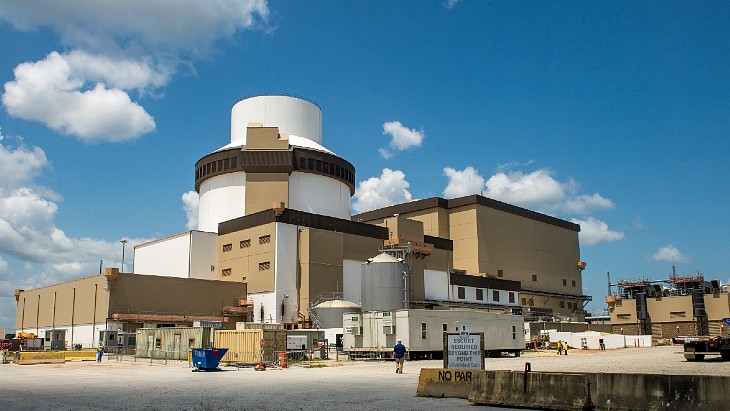Initial criticality signals that the nuclear fission reaction in the reactor is now self-sustaining, meaning the reactor can begin producing heat that will be used to make steam to produce electricity.
The reactor's power output will now be raised to prepare it for synchronisation to the electric grid, and the start of electricity generation. Operators will take the unit through a gradual power increase until it reaches its full power output. Tests to ensure all systems are operating together and to validate operating procedures will be carried out throughout the start-up process before the unit is declared to be in commercial operation.
Unit 4 is one of two Westinghouse AP1000 units being built at the Vogtle site near Waynesboro in Georgia, which is already home to two operating pressurised water reactors. Unit 3 - the first new nuclear unit to be built in the USA for more than three decades - reached initial criticality in March 2023, and began commercial operation in July.
Fuel loading at Vogtle 4 began in August 2023, when there was a projected in-service date of around the end of 2023. However, that was revised to the first quarter 2024 after a motor fault was discovered in a reactor coolant pump.
The last reactor to start up in the USA before Vogtle 3 was Watts Bar unit 2, in 2016. Construction of that reactor began in 1973 and was suspended in 1985 before work resumed in 2007.
The units are co-owned by Georgia Power, Oglethorpe Power, MEAG Power and Dalton Utilities, and will be operated by Southern Nuclear.
In its statement announcing Vogtle 4 had reached first criticality, Georgia Power said: "The new Vogtle units are an essential part of Georgia Power's commitment to delivering clean, safe, reliable and affordable energy to its 2.7 million customers. When operating, each of the new units can produce enough electricity to power an estimated 500,000 homes and businesses."
As well as Vogtle 3, four AP1000 units are in operation in China with four more under construction, and two more planned. The design has also been selected by Poland, Ukraine and Bulgaria for their nuclear energy programmes.





_82983.jpg)
_34792.jpg)
_16403_79272.jpg)
_44458.jpg)

_76087_55556.jpg)



